calsfoundation@cals.org
Cuban Refugee Crisis
Arkansas played a part in the international drama of 1980, when 125,000 Cubans left their homeland for a new life in the United States. Roughly 25,000 of these Cuban refugees—called Marielitos because they had departed Cuba from the port of Mariel—were housed for a time at Fort Chaffee in Sebastian County. Their presence in Arkansas created social and political tension widely thought to have had an impact on the Arkansas governor’s race of 1980.
Cuba and the Boatlift
The crisis of 1980 began April 11 of that year, when Hector Sanyustiz, accompanied by five friends, drove a Havana city bus through a gate onto the grounds of the Peruvian Embassy to Cuba. The six intended to seek political asylum. By the following Saturday, 10,000 other Cubans had entered the embassy grounds through the damaged gate, also seeking escape from Cuba. The government of Peru sought international help to find homes for the refugees. As other countries offered to receive dozens or hundreds of refugees, the U.S. government pledged to accept up to 3,500.
At this point, the Cuban government announced that American boats were welcome to come to the port of Mariel to transport refugees directly to the United States. Although the Department of State asked American citizens not to become involved, by April 25, more than 300 American boats were in the Mariel harbor, awaiting passengers.
Over the following weeks, thousands of Cubans boarded American boats in Mariel and were taken to southern Florida. Estimates of the number of Marielitos brought to the United States range from 124,776 to 125,344. Even as the U.S. government tried to discourage citizens from transporting Cubans, President Jimmy Carter promised to receive the Cubans fleeing Castro’s communist government “with open arms.”
Cubans Come to Arkansas
The first refugees were processed at Eglin Air Force Base in south Florida. Of the 6,400 Marielitos received before May 2, fifty-five were found to have criminal records. (This counters frequently reported rumors of the time, persisting to the present, that the Cuban government forced thousands of criminals and insane persons onto the boats in Mariel harbor. Popular belief in this rumor may explain the negative reaction of many Arkansans to the presence of Cuban refugees in northwest Arkansas.) Overwhelmed by the effort to handle thousands of refugees in one location, the U.S. government announced plans to use Fort Chaffee as a temporary center for housing and processing refugees.
Between May 9 and May 18, 19,048 Cuban refugees were transported from Florida to Fort Chaffee. Some were quickly processed and released to family members, friends, or other sponsors. Others, lacking sponsors, were held for a longer period of time. At this time, with the refugees living there, Fort Chaffee had become the eleventh largest city in Arkansas. The presence of the Marielitos there, though, was disturbing to many residents of Barling, the small town near the fort. Because the Cubans were not prisoners, soldiers were told at various times that violence or threats of violence in order to keep them on government property were not permitted. By May 20, twenty-one Cubans had left the fort; on May 22, thirty more attempted to leave. The next week, more Marielitos (newspaper reports said 350) left the fort through an unguarded gate. Governor Bill Clinton ordered the National Guard to assist local, county, and state police to prevent refugees from leaving the fort.
On May 29, guards and police officers faced an advance of roughly 1,000 Marielitos out the gate of the fort; all were stopped and returned. Some were halted on the state highway near the town of Barling. On June 1, between 2,000 and 3,000 Marielitos rioted on the fort property. Four buildings were set on fire; sixty-two injuries were reported (including five guards), but there were no deaths. Newspaper reports described the citizens of Barling and other area communities arming themselves for protection against an anticipated Cuban refugee invasion. Governor Clinton gave Gene Eidenberg—the White House official whom President Carter had placed in charge of the Cuban refugee issue—a tour of Barling the night of June 1–2, impressing upon him the danger of confrontation between Marielitos and local residents. On June 2, stronger security standards were issued, and a promise was made that no additional Cuban refugees would be sent to Arkansas.
Upset with the slowness of the screening and processing, Cuban groups staged hunger strikes and occasionally riots. In June, it was estimated that the federal government was spending $1 million each day on Fort Chaffee alone. Later that same month, Governor Clinton sent a bill to the federal government for $213,850 spent by the State of Arkansas due to the Marielitos. A $664,000 grant from the federal Office of Education provided English classes to the Cuban refugees temporarily housed in Arkansas.
Allegations of brutality or torture by U.S. soldiers and guards were occasionally published; although five Fort Chaffee guards were indicted over charges of beating refugees, no one was ever convicted because of these allegations. At the end of July, twelve government workers were removed from their responsibilities at Fort Chaffee after evidence was shown that they were using their contact with the refugees to draw them into The Way, an organization widely regarded as a religious cult.
By the middle of September, fewer than 3,000 Marielitos remained at Fort Chaffee. On September 20, the federal government announced plans to consolidate unprocessed refugees at Fort Chaffee to spare them the cold winters of Wisconsin and Pennsylvania. The American government transferred 643 Marielitos from Eglin Air Force Base in Florida to Fort Chaffee and began moving what would total 3,236 refugees from Camp McCoy in Wisconsin. By October 10, 1980, Marielitos had also been moved from Pennsylvania to Arkansas, raising the Cuban population of Fort Chaffee to over 8,300.
That month, a political commercial for Frank White, Republican candidate for governor of Arkansas, suggested that Governor Clinton had failed to protect the citizens of Arkansas from having dangerous Cubans in the state; the TV commercial included footage of the 1,000 Marielitos leaving Fort Chaffee on May 29. Though it is impossible to measure all the factors that determine the outcome of an election, Clinton is among those who felt that the association of the Cuban refugee problem with Clinton’s term as governor led to White’s victory.
Aftermath
On January 4, 1981, 5,893 Marielitos remained at Fort Chaffee; the last twenty-three Cubans left the fort on February 4, 1982. Records report that 25,390 Cubans had been housed at the fort after arriving in Florida.
Overall, of the roughly 125,000 Cubans who entered the United States in the 1980 boatlift, 103,000 were released into American society relatively quickly. Those detained for a longer time included 1,200 suspected of serious crimes in Cuba and 600 diagnosed as severely mentally ill; the rest were suspected only of political crimes in Cuba or other minor offenses. Over time, ninety-eight percent of the Marielitos joined the United States population. Most live in south Florida or in New York City or northern New Jersey. Few, if any, of the Marielitos chose to live in northwest Arkansas.
For additional information:
Carter, Jimmy. Keeping Faith: Memoirs of a President. Fayetteville: University of Arkansas Press, 1995.
Clinton, Bill. My Life. New York: Alfred A. Knopf, 2004.
Guerrero, Perla M. “Impacting Arkansas: Vietnamese and Cuban Refugees and Latina/o Immigrants, 1975–2005.” PhD diss., University of Southern California, 2010.
Larzelere, Alex. Castro’s Ploy—America’s Dilemma: The 1980 Cuban Boatlift. Washington DC: National Defense University Press, 1988.
Lipman, Jana K. “A Refugee Camp in America: Fort Chaffee and Vietnamese and Cuban Refugees, 1975–1982.” Journal of American Ethnic History 33 (Winter 2014): 57–87.
Moyer, Justin Wm. “The Forgotten Story of how Refugees Almost Ended Bill Clinton’s Career.” Washington Post, November 17, 2015. Online at https://www.washingtonpost.com/news/morning-mix/wp/2015/11/17/the-forgotten-story-of-how-refugees-almost-ended-bill-clintons-career/ (accessed January 25, 2023).
Ojito, Mirta. Finding Manana: A Memoir of a Cuban Exodus. New York: The Penguin Press, 2005.
Plunkett, Bob. “The New Arkansans: The Cuban Refugees Revisited.” Arkansas Times, September 1981, pp. 22, 24, 26–29.
———. “What Went Wrong at Fort Chaffee: Behind the Cuban Refugee Crisis.” Arkansas Times, September 1980, pp. 34–36, 38–39, 41–48, 53.
Rieff, David. The Exile: Cuba in the Heart of Miami. New York: Simon & Schuster, 1993.
Rogers, Blair Austin. “La Vida Nueva: Detainees, Arkansans, and Libertad during the Cuban Refugee Crisis of 1980–1983.” MA thesis, University of Nevada, Reno, 2023.
Spears, Judge Jim. Yearning to Breathe Free: A Judicial History of the Cuban Relocation Project Fort Chaffee, Arkansas 1980–1982. N.p.: Judge Jim Spears, 2019.
Speir, Caroline. “From Cuba to Fort Chaffee.” Journal of the Fort Smith Historical Society 44 (Fall 2020): 30–45.
Steven Teske
North Little Rock, Arkansas


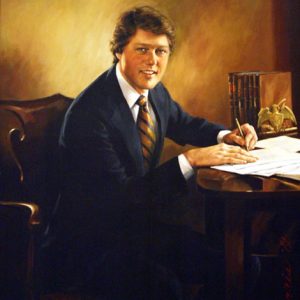 Bill Clinton
Bill Clinton 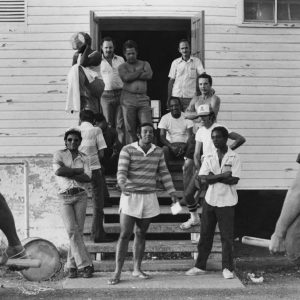 Cuban Refugees
Cuban Refugees 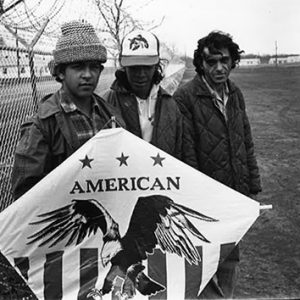 Cuban Refugees
Cuban Refugees 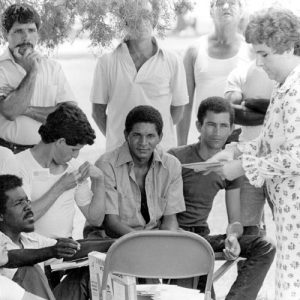 Cuban Refugees
Cuban Refugees 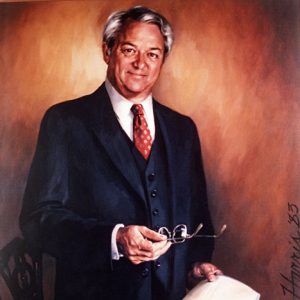 Frank White
Frank White 



Hello all–
I am one of the authors cited at the end of this entry. My research is expanding to include and go beyond this military base in terms of scope. If you have comments, historical documents, or histories you’d like to share about the Cuban Refugee Crisis, please reach out to me at bl************@*su.edu
There is no mention of 2/36 Field Artillery from Fort Sill being there, which is sad! Our unit was one of the first to deploy there–actually went there twice!
There was a second riot there in early 1981. I was an MP there from Fort Hood, Texas. It started when a guard inside the encampment shot a Cuban who was trying to stab another Cuban. There were many MPs that were injured. I can’t find news about the riot. I wonder why.
I was a first lieutenant assigned to General Bulldog Drummonds staff as the assistant adjutant. The summer of 1980 was brutally hot, and we worked seven days a week, ten- and twelve-hour days. One of my duties was to oversee and facilitate the refugees publishing of their weekly newspaper. Not being bilingual at the time, communication would have been a problem had it not been for the fact that several of the Cuban newspaper staff spoke almost perfect English. Now, I was told that English wasnt even taught in Cuban schools at that time; amazingly, they had learned the language by listening to outlawed/forbidden radio stations from southern Florida. Not surprisingly, they were also well versed in American music, especially rock music. We didnt have a lot of time off that summer, but I remember going to the pool on Post to cool off on a rare Sunday afternoon that we didnt have to work. Shortly after I got there, I noticed smoke rising above a row of barracks down the street. Soon after, a general alarm sounded and we were told to vacate the pool and report to our duty stations. We learned later that some of the Cubans had rioted and set fire to their barracks. Not long after that, Bill Clinton (governor at the time) visited. I got his autograph on a sheet of General Drummonds stationery. The generals secretary (I wish I could remember her nameshe was stately, wore her gray hair in a bun, and was very nice but was also no-nonsense) told me to be sure and save that autograph because rumor had it that he would be president someday. Im proud to say I still have it.
Part 1: In 1980, my first assignment was with the 258th Military Police Company based at Fort Polk, LA. In May 1980, we received orders to deploy to Ft. Chaffee, AR. Upon arriving, we were immediately assigned to guard the containment area housing Cuban refugees. The only thing separating them from us were saw horses and rope. The intelligence obtained was that the refugees were getting disgruntled by the process and conditions. We were the only military unit providing security for the base and refugees. We were issued only riot gear and three-foot wood batons. On June 1, it seemed like all hell broke loose. I was on patrol with my supervisor (checking on the guard shacks) when we received a radio call of a military jeep that was on fire and heading for the main gate. We arrived at the north end east of the gate when the jeep drove up. The two MPs from my company were told to get down by the law enforcement (state troopers, county sheriffs, and some local officers) lined up on the other side of Highway 22. The two MPs were on the ground behind the three-foot rock wall when the jeep arrived with approximately fifty rioting refugees right behind it. I did not see or smell any tear gas fired by the state troopers, and there were no National Guard soldiers there either. When the jeep got within a few feet of the gate, the civilian law enforcement opened fire, hitting several Cubans. They turned the jeep around and dispersed the crowd. Dozens of refugees were killed and thrown into burning dining facilities. [Editors note: This account conflicts with published reports of the incident, which state that no refugees were killed in the rioting.]
Part 2: After the rioting calmed down, they put up an eight-to-ten-foot fence with wire on top. They separated the population as far as a family area, female area, male area, etc. We still had contact with the refugees through the fence and found out that most of the refugees were excited and thankful to be there. But there was a group of refugees that didn’t want to be there and was trying to get sent back to Cuba. During the riots, the refugees were trying to police themselves, and any trouble makers were being killed and tossed into the burning dining facilities. I know that this is hearsay from them to me, but they explained how they made weapons from the metal bunk bed adapters that were obtained before we (military) realized what they were doing. So, between those and knives they got from the dining facilities, they were well armed. We left around September and were replaced by another Military Police Company out of Ft. Riley, KS. We did hear stories about ranchers sponsoring out Cuban refugees and basically putting them in a bunkhouse using them as cattle hands to the point of almost slavery. It was said that you could get $500 per refugee. Other stories include that the refugees would get sponsored out and then run away to Miami to be with family. I remember how friendly the local civilians were, bringing baked desserts and food to the gates and thanking us for keep them safe. [Editors note: This account conflicts with published reports of the incident, which state that no refugees were killed in the rioting.]
Talk to the people who were actually there. Ask the Sebastian County Deputies who were assigned to patrol the perimeters of Chaffee and find the escapees. What did we do with them? Were there deaths? Hundreds. Why hide what actually happened? This was a planned and well-executed event by the Cuban government to empty their prisons of some of the most vicious criminals they had…leave, you’re free, return and die. What a screw up by the Carter administration. Respectfully, Ron Thomas, Boone County Sheriff’s Department, BN 55 [Editors note: This account conflicts with published reports of the incident, which state that no refugees were killed in the rioting.]
It’s been close to 40 years ago that I stood with 41 other various law enforcement officers in front of Fort Chaffee while the Cubans burned the barracks and cars and fired shots at us as we were lined up in the middle of Highway 22 near the main gate. We watched as different groups of rioters got “fired up,” and we noticed that there were instigators moving among the general group of Cubans. It should also be noted that there were a number of Haitians mixed in with the population and there seemed to be no love between the two groups. Approximately 250 refugees set out on the road to Jenny Lind directly south of Chaffee. At that time, another Sebastian County deputy and myself were dispatched to that area in order to stop any refugees from leaving the base. Local armed citizens patrolled the back roads searching for any Cubans who left the base. We did not stop them from protecting their property. There is so much information concerning all of this I could write a book–some of which I participated in and other information shared to me by my Brother Law Enforcement Officers. It was a complete governmental screw up.